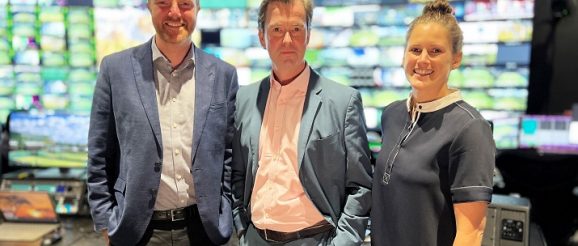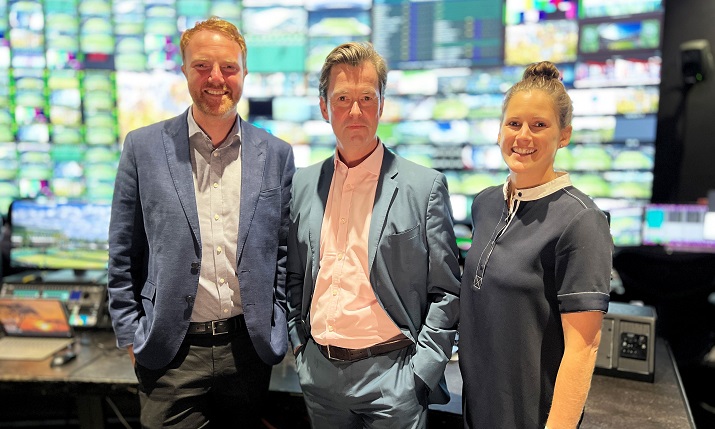Live from Wimbledon: AELTC’s Paul Davies on balancing innovation and tradition


(L-R) James Muir, broadcast technical manager; Paul Davies, head of broadcast, production & media rights; Georgina Green, broadcast & production manager
2022 has been a special year for Wimbledon, with the 100th anniversary of the first match to be played on the iconic Centre Court.
As the oldest tennis tournament in the world, Wimbledon is a famed observer of tradition, with players adhering to an all-white dress code and minimal advertising around the grounds. While the All England Lawn Tennis Club (AELTC) paid due reverence to Centre Court’s 100th (more on this later), this year’s tournament also saw a fairly significant break from the usual practice of play pausing on the middle Sunday of the two-week tournament.
“A lot of the broadcasters used to still be on air on the middle of Sunday even though there wasn’t any play, so one of the great advantages of having play is that the narrative continues and there’s not that breaking in storytelling,” says AELTC head of broadcast, production and media rights Paul Davies. “Broadcasters love the idea; we’re stretching our resources, but also making the most of them.”
While the continuation of play has been a boon for broadcasters, an arguably bigger shift is that for the first-time host broadcaster Wimbledon Broadcast Services committed to cover every single match.
Speaking with SVG Europe during the tournament, Davies saysthey decided to go “deep into week two”.
“That includes some of the new events like the under-14 juniors, and the invitational events which are back this year but didn’t happen last year, because of Covid.
“So if broadcasters have got a an under 14, Jr. Who’s from Peru or you know, from Italy, we can guarantee that they can receive coverage of that match. And then it’s a question of whether they would like us to put commentary on it, which we generally can do because we commentate on 11 calls at any one time. That means we can satisfy all the broadcasters around the world and they get value from their rights, because that’s what it’s all about – seeing their players, as well as the top names, perform.”
For broadcast technical manager James Muir, the additional coverage has been more of a logistical than technical challenge.
He says: “We used to derig the southern end courts on the middle Sunday…but because now the play extends the facility is already there doing the coverage, we just extend the time we keep it running.
“There are some minor considerations around the amount of data storage as a result of having more coverage. But aside from more crew days, more equipment days and timing, it doesn’t add any facility for us. That’s why it’s a good win for us; we can provide extra coverage without really having to rethink things.”
Archive digitisation
In keeping with the theme of maximising coverage and output, this year has seen the culmination of a four-year project to digitise AELTC’s archive of IMG-held content in order to make that content available as part of the marking of the 100th anniversary of the move to the current premises on Church Road, in southwest London.
Says Davies: “There were probably 15,000 tapes and film stock that needed to be either transferred or interrogated to find out exactly what we had. There was a pretty good understanding, but it wasn’t until we started going through the archive that we realised exactly what we had.”
